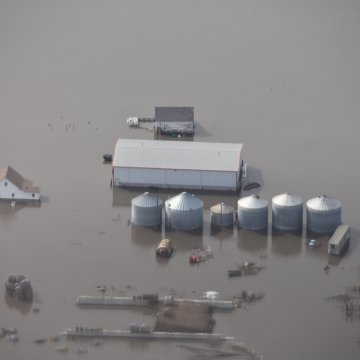Explore our blog featuring articles about farming and irrigation tips and tricks!
Flooded Corn Must Be Destroyed, Not Sold

By: Mike McGinnis
DES MOINES, Iowa — “Chapters in books and entire books will be written about this (Midwest March flood) tragedy,” says Keith Glewen, an educator at the University of Nebraska-Lincoln.
In Nebraska, the state’s governor has estimated the losses to the agricultural sector alone at $1 billion.
The damage covers states such as Nebraska, Missouri, South Dakota, Wisconsin, and Iowa.
UNTOLD AMOUNTS OF GRAIN LOST
For farmers who have full grain bins flooded from bursting rivers, the question now is what to do with that stored crop.
Flooding is causing damage. A Fremont County, Iowa, farmer quoted in the Waterloo-Cedar Falls, Iowa, Courier newspaper on Wednesday, estimated about 390,000 bushels of stored soybeans and about 1.2 million bushels of stored corn are under water in that county alone.
As the Missouri River crests, even more corn stored in Iowa is expected to be damaged. At local cash prices for corn and soybean, that’s about $7.3 million farmers may be unable to replace, according to the Waterloo-Cedar Falls, Iowa, newspaper.
To make matters worse, the National Oceanic Atmospheric Administration reports that above-average precipitation this spring could increase the flood risk across the country.
Unfortunately, federal policy states that the grain damaged from flooded river water has to be destroyed, according to Iowa State University experts.
Already rapid snowmelt this spring has caused instances of stored grain being covered with floodwater, according to an ISU released report, Thursday.
Stay up to date on all T-L news and get alerts on special pricing!


